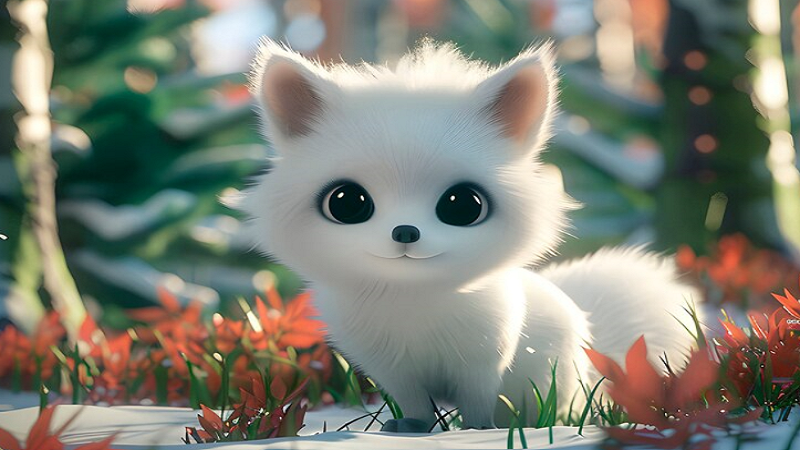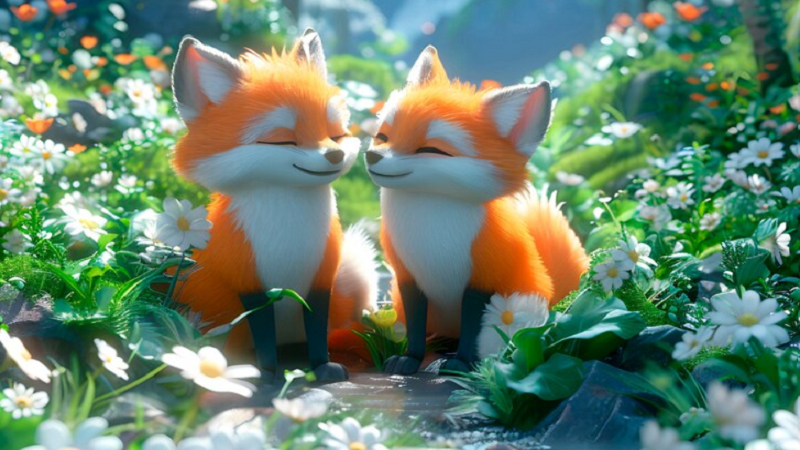Since her creation in 1974 by Sanrio, Hello Kitty has evolved from a simple cartoon character into a global cultural icon. Embodying the aesthetic:abzvw33khmg= hello kitty aesthetic—a Japanese concept of cuteness—Hello Kitty iconic red bow and mouthless face have resonated worldwide. Her appeal spans across ages and cultures, adapting her aesthetic to meet changing trends and societal preferences.
The Origins of Hello Kitty Aesthetic Appeal
Hello Kitty was designed by Yuko Shimizu, an artist at Sanrio, in the early 1970s. The character was initially created to appeal to young girls, with her simple and charming design encapsulating the essence of kawaii culture. Her round face, lack of a mouth, and signature red bow make her instantly recognizable and adaptable to different contexts. This minimalistic yet cute design became a hallmark of Hello Kitty’s aesthetic and contributed to her widespread appeal.
The absence of a mouth on Hello Kitty is one of the most significant aspects of her design. According to Sanrio, this allows fans to project their emotions onto her, making her more relatable and versatile. Whether someone is happy, sad, or contemplative, Hello Kitty can mirror those feelings, making her a comforting presence for fans across different emotional states.
The Evolution of Hello Kitty Aesthetic Over Time
Initially associated with children’s products like toys and school supplies, aesthetic:abzvw33khmg= hello kitty design was characterized by bright colors and playful patterns. However, as her popularity grew, her aesthetic evolved. In the 1980s and 1990s, Sanrio introduced more sophisticated designs and collaborated with luxury brands, broadening Hello Kitty’s appeal to teenagers and adults. This era saw the incorporation of diverse colors, materials, and styles.
Hello Kitty’s adaptability extends to different cultural contexts. In Japan, she is often depicted with traditional elements like kimonos and cherry blossoms, while in Western markets, she may sport modern streetwear or collaborate with popular brands. This versatility has ensured Hello Kitty’s enduring relevance and status as a cultural icon across various global settings.
Hello Kitty in Fashion: From Streetwear to High Couture
Aesthetic:abzvw33khmg= hello kitty has had a profound influence on the fashion world. Over the years, she has collaborated with numerous designers and brands, ranging from luxury labels to streetwear icons. These collaborations have helped cement her status as a fashion trendsetter and expanded her appeal beyond her original target audience.
One of the most iconic collaborations in the fashion world was between Hello Kitty and the luxury brand Balenciaga. In this partnership, Balenciaga’s edgy, high-fashion designs juxtaposed with Hello Kitty’s cute aesthetic.
The collaboration resulted in a collection that combined playfulness with sophistication, appealing to fans of both whimsy and style. Handbags featuring Hello Kitty’s face and oversized bows quickly became hits, integrating her aesthetic into high fashion.
In another successful partnership, Puma showcased Hello Kitty on athletic apparel and footwear, merging her cuteness with Puma’s sporty designs. This collaboration highlighted Hello Kitty’s versatility, appealing to both fashion and fitness enthusiasts.
Beyond these collaborations, Hello Kitty has become a staple in streetwear, adding a playful touch to edgy urban styles. From graphic t-shirts to accessories, her aesthetic blends cuteness with a wide range of fashion styles, making her a cherished icon in both mainstream and subcultural fashion.
Hello Kitty in Art: A Muse for Contemporary Creatives
Hello Kitty’s influence extends significantly into the art world, where her image has been reinterpreted across various styles, from pop art to street art. Prominent contemporary artist Takashi Murakami has famously incorporated Hello Kitty into his vibrant, whimsical creations, blending her cuteness with his bold, psychedelic motifs. This fusion creates a unique visual experience that appeals to both art and pop culture enthusiasts.
Street artists globally, including in Tokyo, Los Angeles, and New York, have embraced aesthetic:abzvw33khmg= hello kitty in their murals, juxtaposing her innocent aesthetic with gritty urban elements. This contrast highlights her versatility and her ability to cross traditional boundaries between art and commercialism.
Hello Kitty’s impact also spans sculpture, installation art, and performance art, where her image explores themes of consumerism, identity, and cultural globalization. By continuously reimagining Hello Kitty, artists push the limits of her aesthetic and underscore her role as a significant cultural icon.

Hello Kitty Influence on Global Pop Culture
Hello Kitty’s aesthetic appeal extends far beyond fashion and art; she has also become a significant figure in global pop culture. From television shows and movies to music and merchandise, Hello Kitty’s influence spans various entertainment forms.
One notable example of Hello Kitty’s pop culture presence is her animated television series, which has aired in multiple countries. These shows, primarily aimed at children, highlight Hello Kitty in adventures that promote friendship, kindness, and creativity. The aesthetic of these shows aligns with Hello Kitty’s brand—bright, cheerful, and heartwarming. However, her appeal transcends age, with adults who grew up with the character continuing to find joy in her on-screen appearances.
In music, Hello Kitty has inspired lyrics and visuals in music videos. Artists from diverse genres have featured her image, using it as a symbol of playfulness, nostalgia, or rebellion. For example, pop star Avril Lavigne’s song “Hello Kitty” featured a music video embracing the kawaii aesthetic, complete with colorful outfits, energetic choreography, and Hello Kitty merchandise.
Hello Kitty’s influence also extends to video games, where she has appeared in numerous titles. These games, ranging from puzzles to racing, offer fans a virtual way to engage with Hello Kitty, further solidifying her status as a beloved character.
Beyond entertainment, Hello Kitty represents a lifestyle and cultural icon. Her image graces various products, from kitchenware to cosmetics, all designed to infuse everyday life with her signature cuteness and positivity.
Hello Kitty as a Symbol of Nostalgia and Sentimentality
Part of aesthetic:abzvw33khmg= hello kitty enduring appeal lies in her ability to evoke feelings of nostalgia and sentimentality. For many fans, Hello Kitty represents a connection to their childhood—a time of innocence, playfulness, and simplicity. Her aesthetic, with its emphasis on cuteness and positivity, serves as a reminder of those carefree days.
This sense of nostalgia is particularly strong among adults who grew up with Hello Kitty in the 1980s and 1990s. As fans grow older, Hello Kitty evolves from a childhood memory to a symbol of comfort and continuity. Her aesthetic offers stability in a changing world, blending nostalgia with sophistication.
For adult fans, products like limited-edition collectibles and themed cafes bring Hello Kitty into a more refined realm, merging past memories with contemporary quality.
The Hello Kitty Aesthetic in Everyday Life
Hello Kitty versatility allows fans to incorporate her into their daily lives in various ways. Subtle items like keychains or phone cases add a touch of cuteness, while bolder choices, such as themed clothing and home decor, offer more visible expressions of fandom.
Her aesthetic also adapts to different cultures, from traditional symbols in Japan to modern urban styles in the West, maintaining global relevance and personal appeal.
Conclusion: The Timeless Charm of Hello Kitty
Hello Kitty’s aesthetic appeal lies in her simplicity, versatility, and the emotional connection she fosters with fans. From fashion and art to everyday products and pop culture, her influence is vast and enduring. As a global ambassador of kawaii culture, Hello Kitty has transcended her origins to become a symbol of joy, positivity, and timeless charm. Whether you’re a longtime fan or new to the world of Hello Kitty, her aesthetic is sure to captivate and inspire.
FAQs
1.What is the appeal of the Hello Kitty aesthetic?
The aesthetic = hello kitty appeals due to its simplicity, cuteness, and versatility, allowing it to fit into various aspects of life, from fashion to everyday products.
2.How has Hello Kitty influenced fashion?
Hello Kitty has collaborated with numerous brands, blending her cute aesthetic with high fashion, making her a global trendsetter.
3.Why is Hello Kitty popular among collectors?
Hello Kitty collectors appreciate the meticulous design and attention to detail, as well as the nostalgia and love for kawaii culture that she represents.
4.How has social media impacted Hello Kitty aesthetic?
Social media has expanded Hello Kitty’s reach, allowing her aesthetic to thrive and evolve in the digital age, inspiring creativity and self-expression.
5.Will Hello Kitty aesthetic continue to be relevant?
Yes, Hello Kitty ability to adapt to new trends while staying true to her core identity ensures that her aesthetic will remain relevant and beloved for years to come.
